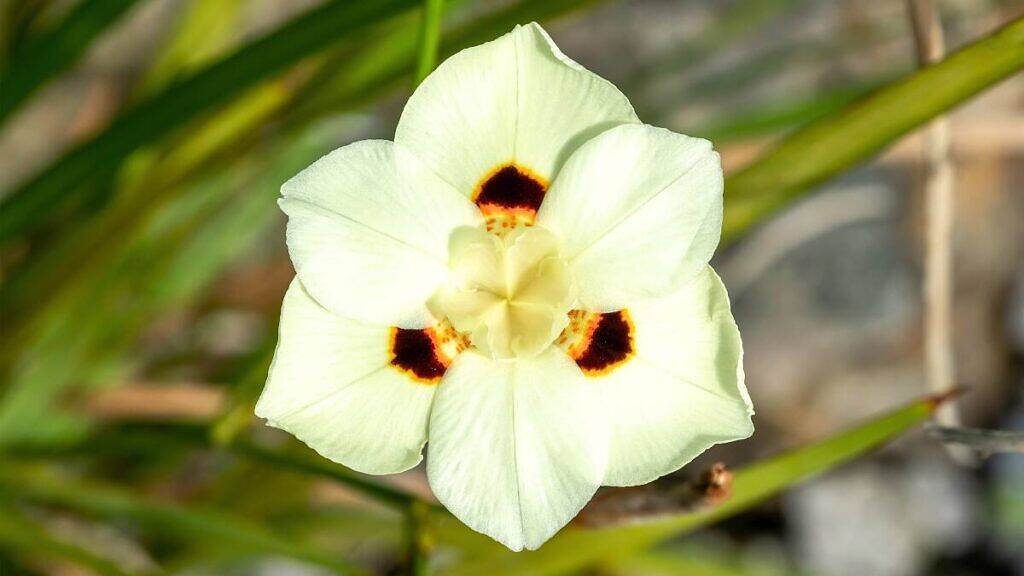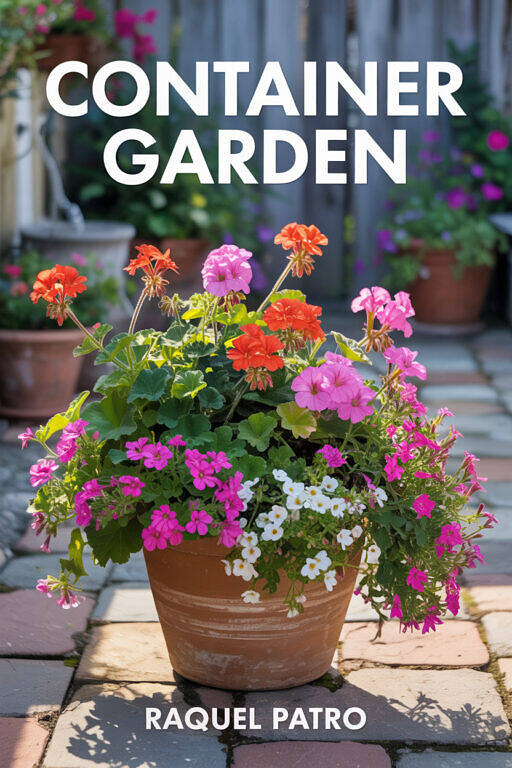The African Iris (Dietes bicolor), also known as Fortnight lily, is a herbaceous and flowering plant that has earned its place in modern landscaping for one simple reason: it delivers results without drama. Its yellow flowers dotted with dark spots create an immediate visual impact, while the emerald green foliage maintains elegance throughout the year. This species thrives where others fail—it withstands prolonged droughts, blooms continuously, and requires minimal maintenance. Therefore, it has become the strategic choice for extensive borders, public gardens, and high-traffic areas in tropical and subtropical regions. Its presence is constant in urban spaces, where resilience surpasses any aesthetic requirement.
The genus name Dietes derives from the Greek “di” (two) and “etes” (relative), meaning “with two relatives,” a reference to this plant’s relationship with species from the Iris and Moraea genera, also in the Iridaceae family. The specific epithet bicolor is straightforward—it describes exactly what you see in the flowers, where the vibrant yellow of the petals contrasts with the dark spots that decorate them.
The African Iris is native to the east coast of South Africa, where it naturally occurs in open ecosystems, moist fields, watercourse edges, and areas of low vegetation. It thrives in subtropical to tropical environments, tolerating seasonal variations in moisture and temperatures from mild to moderately cold. The original habitat features well-drained or slightly moist soils, full sun exposure or light filtered through sparse vegetation. The species can form large clumps when undisturbed, integrating into the local flora as a dominant element in certain natural landscapes.
Dietes bicolor is a perennial herbaceous plant, belonging to the Iridaceae family. It has a medium size, forming dense clumps that reach between 24 inches and 39 inches (60 and 100 centimeters) in height and a variable width depending on the available space. The root system is fasciculated, typical of monocotyledons, with short and branched rhizomes that promote vegetative multiplication and the formation of compact groupings. The stem is reduced, underground, and barely visible, mainly represented by the rhizomes; above ground, the leaves emerge directly from the base in fans. The growth is moderately fast under favorable conditions, with lateral expansion by division of the rhizomes and formation of new clumps over time.
The leaves of Dietes bicolor are linear, long, and narrow, resembling sword-shaped (ensiform) blades, arranged in basal fans that emerge directly from the rhizome. They exhibit an emerald green color, ranging from light to medium intensity, with well-defined parallel veins along their length and entire edges. The leaves are persistent throughout the year in tropical and subtropical regions, giving the plant an evergreen appearance. They have a firm and flexible texture, a smooth surface without any apparent pubescence, and a discreet shine when exposed to sunlight. The length of the leaves varies between 16 to 35 inches (40 to 90 centimeters), while the width rarely exceeds 0.8 inches (2 centimeters).
Dietes bicolor is a monoecious species, featuring hermaphroditic flowers on each individual. Flowering occurs throughout the year in suitable climates, with peak intensity in spring and summer. The inflorescences are erect floral scapes that rise above the foliage, bearing a few isolated flowers or clusters at the apex; each flower lasts only one day, but the continuous production of buds maintains a prolonged ornamental appearance. The flowers display radial symmetry (actinomorphic), an open shape with six light yellow or whitish tepals marked by three brown or purplish spots surrounded by an orange outline; they do not have a noticeable fragrance.

Pollination mainly occurs through insects attracted by the contrasting colors of the petals. The fruit is an elongated capsule, greenish to brown when ripe, neither edible nor ornamental; upon drying, it may bend the scape to the ground before opening to release the seeds. The seeds are small, numerous, dark brown, and irregularly shaped; their dispersal occurs through the spontaneous opening of the dry capsule (dehiscence), allowing them to fall close to the mother plant.
There is often confusion in identifying between different types of ornamental Fortnight Lilies, especially between Dietes bicolor, Dietes iridioides, and Dietes grandiflora, which share the same genus and are widely used in tropical and subtropical landscaping. However, there are clear differences for those who observe carefully. Dietes bicolor has smaller flowers, pale yellow in color, with three prominently visible brown spots at the base of the outer petals—a distinctive and quite unique characteristic. Its growth is more compact and upright, ideal for borders or small spaces.
Dietes iridioides features larger and more showy flowers, white with purple and yellow spots, and sparser, darker foliage, creating a stronger visual contrast. Dietes grandiflora, as the name suggests, has the largest flowers among the three, also white, but with softer bluish markings and broader, almost satin-like petals. Moreover, it grows more vigorously and requires more space, making it suitable for large flower beds and areas where a greater visual impact is desired.
In landscaping, the African Iris is primarily used as a border and rustic ground cover in large flower beds, borders, and floral masses due to its vigorous growth in dense clumps. As a border, it creates defined and continuous lines that delineate flower beds and paths without requiring frequent pruning, maintaining its naturally compact shape. In masses, it forms dense carpets that fill large areas with uniform texture and prolonged flowering, being especially effective in spaces that require immediate visual impact. Its adaptability to different scales allows its use in both residential gardens and large commercial projects.

In contemporary landscaping, the African Iris perfectly meets the demands for sustainability and water efficiency. Its drought resistance and tolerance to different soil types make it suitable for projects that follow xeriscaping principles, especially in regions where water is a limited resource. The plant adapts well to borders of parking lots, shopping center flower beds, and industrial areas, where it must withstand adverse conditions such as pollution, soil compaction, and extreme temperature variations. This robustness eliminates the need for constant irrigation and significantly reduces maintenance costs. Due to its tolerance for poor and dry soils, it is also used for stabilizing light slopes and as a visual element along paths or walls.
Cultivation in pots and planters has further expanded its usage possibilities, allowing the species to integrate into terraces, balconies, and paved spaces where direct planting is not viable. In these containers, the African Iris thrives as long as it has proper drainage, creating movable focal points that can be repositioned as needed in the design. The most interesting combinations occur when it is paired with plants of contrasting textures: ornamental grasses such as Pennisetum or Festuca add movement, while more robust foliage like Agapanthus or Clivia establish scale contrasts. With complementary flowering shrubs such as Ixora or Pentas, it forms balanced compositions where each species maintains its visual identity.
In recent years, the species has been overused in landscape projects, creating a visual monotony that impoverishes the diversity of urban gardens. To avoid this overuse, landscapers should intersperse African Iris with other similar characteristic species such as Agapanthus, Bird of Paradise, Iris, Dianella, Clivia, or even other plants, creating more interesting visual rhythms. An effective strategy is to use it as a supporting element, not as the sole protagonist, alternating planted sections with it and others with different species, thus maintaining the visual richness that characterizes well-planned gardens.
The African Iris performs best in full sun but also tolerates partial shade, although flower production is reduced in less illuminated locations. It adapts well to tropical and subtropical climates, being able to withstand moderate temperature variations, with an ideal range between 59°F (15°C) and 86°F (30°C). It tolerates mild cold and occasional frosts, as long as they are not prolonged or intense; in regions subject to strong frosts, it may suffer foliar damage. It shows good resistance to maritime conditions and moderate winds, making it suitable for coastal areas and open spaces.
In excessively shaded or humid environments, vegetative vigor decreases considerably. African Iris prefers well-drained, light soils with a medium to sandy texture, and a slightly acidic to neutral pH (between 6.0 and 7.0), rich in organic matter. In pots, it is recommended to use a universal potting mix for ornamental plants enriched with organic compost and perlite or coarse sand to ensure efficient drainage. It is drought tolerant after establishment, but responds well to regular watering during dry periods; excess water or waterlogging can cause rotting of the rhizomes. Irrigation should be moderate, allowing the soil to dry out slightly between waterings.
Planting of the seedlings should be done in shallow planting beds, avoiding burying the rhizomes, which should be close to the soil surface, with spacing of 12 to 20 inches (30 to 50 cm) between plants to allow the development of the clumps. Fertilization can be done annually at the beginning of spring with organic fertilizers or balanced NPK formulations (10-10-10), avoiding excesses that stimulate only leaf growth. Pruning is generally limited to the periodic removal of dry or damaged leaves and floral stems after flowering to stimulate new shoots.
Every 5 to 10 years, a more intense pruning can be performed to decongest the clumps, but never completely cut the foliage. The ideal is to locate each fan of leaves, always leaving one or two of the newer leaves intact, without pruning, and cutting the older leaves at the base. The application of mulch helps to maintain soil fertility and moisture, as well as reducing invasive plants. In pots, replanting or division of the clumps every two or three years is recommended to avoid compaction of the potting mix.
African Iris shows high resistance to most common pests and diseases in ornamental gardens, being rarely attacked by insects or fungi when grown under suitable conditions. Occasionally, attacks by slugs or snails may occur in very humid environments, especially on young leaves. It is not a frequent target of herbivory by domestic or wild animals. Preventive management is based on maintaining well-drained soil and regular removal of old flowers and leaves.
Propagation is preferably done by division of the clumps after the most intense flowering period, usually at the end of winter or beginning of spring. For this purpose, carefully unearth the mother plant and manually separate the rhizomes, ensuring each segment has at least one fan of healthy leaves per seedling; each segment should contain part of the original root system to ensure quick establishment.
Immediate replanting is recommended to prevent dehydration of the exposed rhizomes. Although it is possible to propagate African Iris by seeds collected from mature capsules after natural drying on the plant, this method results in less uniform plants and a longer time until flowering (two to three years). By dividing vigorous clumps, the new plants may begin flowering in the cycle following transplantation.





